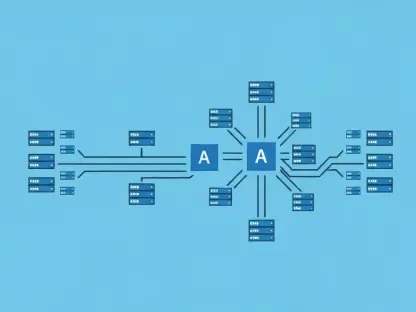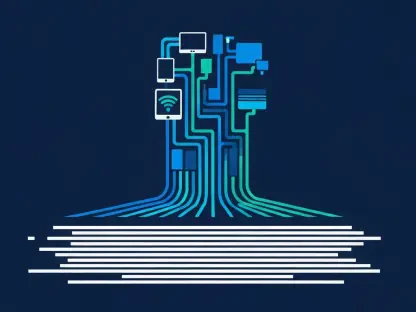In 2025, the landscape of IT operations will be vastly transformed by open-source tools. These tools will drive innovation, enhance security, reduce costs, and increase flexibility across DevOps, cybersecurity, and cloud management sectors. Organizations are investing heavily in integrating these resources into their ecosystems to stay competitive and agile in an ever-evolving digital environment.
Revolutionizing DevOps with Open Source Tools
Automation, collaboration, and continuous integration/delivery (CI/CD) are key aspects of modern DevOps practices. Open source tools are at the forefront of these improvements, providing robust solutions to streamline development and deployment processes.
Jenkins has emerged as a fundamental tool in automating the DevOps process. Its powerful automation capabilities, seamless integration options, and exceptional scalability make it indispensable for ensuring rapid and secure software development. By automating repetitive tasks and enabling continuous integration, Jenkins supports teams in developing and delivering high-quality software efficiently. Additionally, its compatibility with a wide range of third-party tools and extensions makes it incredibly versatile, adaptable to various development environments.
In the rapidly evolving domain of DevOps, GitLab has solidified its position as an all-encompassing platform that integrates source code management (SCM), CI/CD, monitoring, and project planning into a single, cohesive environment. The platform’s comprehensive feature set enables development teams to handle end-to-end workflows more effectively, fostering enhanced collaboration and streamlined project management. With built-in security features and support for various compliance standards, GitLab not only aids in the development process but also ensures that security and regulatory requirements are met.
Containerization and orchestration are critical to modern DevOps, and Docker alongside Kubernetes have become indispensable. Docker revolutionizes application deployment by ensuring consistent behavior across different environments—from development to production. This consistency significantly reduces “works on my machine” issues and streamlines the development pipeline. In tandem, Kubernetes handles the orchestration, management, and scaling of containerized applications, providing automatic resource allocation, failover, and load balancing. These tools together ensure that applications can be deployed reliably at scale, with minimal manual intervention, enhancing the overall efficiency of DevOps processes.
Terraform plays a crucial role in the DevOps ecosystem through its infrastructure as code (IaC) capabilities. By allowing developers to define and manage infrastructure using code, Terraform ensures that environment setups are automated and consistent across multiple providers. This IaC approach not only speeds up the provisioning process but also supports multi-cloud infrastructures and maintains version-controlled configurations, reducing the chances of discrepancies and manual errors.
Another essential tool in the DevOps toolkit is Ansible. It simplifies configuration management and deployment with its agentless architecture and user-friendly YAML files. Ansible’s design enables quick automation of complex tasks and ensures consistent configuration across various systems. Its ease of use, scalability, and ability to integrate with other DevOps tools make it a preferred choice for managing infrastructure and application configurations in a dynamic and efficient manner.
Strengthening Cybersecurity with Open Source Tools
With cyber threats becoming more sophisticated, modern cybersecurity tools are essential for identifying vulnerabilities and protecting networks. Several open source tools have become pivotal in this arena.
OWASP ZAP (Zed Attack Proxy) stands at the forefront of web application security. As a leading security scanner, OWASP ZAP specializes in identifying vulnerabilities like SQL injection and cross-site scripting (XSS). Its automated scanning features and comprehensive reporting capabilities make it an indispensable tool for security teams. Regular updates and contributions from the global security community keep OWASP ZAP equipped to address emerging threats, ensuring that organizations can proactively safeguard their web applications against potential exploits.
The Metasploit Framework is another cornerstone in the arsenal of cybersecurity professionals. By enabling meticulous attack simulations, Metasploit helps security teams uncover vulnerabilities and rectify weaknesses before they can be exploited by malicious actors. Its extensive exploit database, coupled with robust post-exploitation modules for maintaining access and escalating privileges, provides a comprehensive platform for proactive threat mitigation. Integration with other security tools further enhances its utility, making it an essential component of a multi-layered defense strategy.
Snort serves as a highly effective network intrusion detection system (NIDS) that continuously monitors network traffic for signs of malicious activity. Its real-time monitoring capabilities, combined with customizable threat detection rules, allow organizations to detect and respond to intrusions promptly. The community-driven nature of Snort ensures that it stays updated with the latest threat signatures, facilitating timely identification and mitigation of new and emerging threats. This proactive approach to network security is essential for maintaining the integrity and confidentiality of organizational data.
For penetration testing, Kali Linux has established itself as a versatile and comprehensive platform. This specialized Linux distribution comes pre-installed with a wide range of tools tailored for various security assessments, including vulnerability analysis, penetration testing, and forensic analysis. Options for live booting allow security professionals to conduct non-intrusive evaluations without altering the target environment. The active and engaged community behind Kali Linux continuously updates and refines the toolset, ensuring that it remains relevant and effective in the face of evolving cyber threats.
Managing Multi-Cloud Environments with Open Source Tools
As enterprises adopt multi-cloud strategies to avoid vendor lock-in and optimize resources, managing these diverse environments has become crucial. Open source tools offer scalable orchestration and monitoring solutions.
One of the most robust solutions for multi-cloud management is OpenStack, a flexible and scalable platform that enables organizations to manage public and private clouds efficiently. By providing a suite of infrastructure services, from computing and storage to networking and identity management, OpenStack offers unparalleled customization and control. Its vendor-agnostic nature also ensures seamless integration across a variety of cloud providers, making it ideal for organizations looking to implement multi-cloud strategies while maintaining elasticity and scalability.
In addition to orchestration, robust monitoring and visualization are essential for effective cloud management. Prometheus and Grafana are two open source tools that excel in this domain. Prometheus, a powerful monitoring solution, collects and stores metrics from various systems, providing real-time performance data essential for maintaining high availability and optimal performance. Grafana complements Prometheus by offering dynamic and customizable dashboards that visualize monitoring data, providing actionable insights and facilitating proactive management of cloud resources. Together, these tools empower organizations to monitor complex multi-cloud environments effectively and to take corrective actions before issues impact end-users.
Kubernetes, already discussed in the context of DevOps, also plays a pivotal role in managing multi-cloud environments. By orchestrating containerized applications seamlessly across different cloud platforms, Kubernetes ensures cross-cloud portability and automatic scaling. Its self-healing capabilities allow applications to recover from failures autonomously, while features like rolling updates and service discovery further streamline operations. Kubernetes’ robust support for microservices architecture enables organizations to deploy and manage applications across multiple clouds with greater flexibility and reliability.
Beyond its utility in DevOps, Terraform extends its capabilities to multi-cloud management by offering unified infrastructure as code (IaC) across various cloud providers. This approach ensures consistent configurations, streamlined deployments, and version-controlled infrastructure management, reducing the complexities associated with handling diverse environments. Terraform’s declarative configuration files and provider-agnostic syntax allow organizations to define their infrastructure in a straightforward and scalable manner, fostering greater efficiency and operational consistency when managing resources across multiple clouds.
Best Practices for Leveraging Open Source Tools
In 2025, the landscape of IT operations will undergo a significant transformation due to the influence of open-source tools. These tools, known for driving innovation, are set to enhance security measures, lower operational costs, and offer increased flexibility. This shift will be particularly notable in the sectors of DevOps, cybersecurity, and cloud management.
Organizations are already making substantial investments to integrate open-source resources into their ecosystems. This strategic move is aimed at maintaining a competitive edge and staying agile in a rapidly changing digital world. Open-source tools provide a collaborative platform where developers can work together to improve the software, thus accelerating technological advancements.
This adoption of open-source solutions is not just about staying current; it’s about reaping the extensive benefits that come with a collaborative, transparent, and flexible approach to IT operations. Companies find that these tools allow for more customized solutions tailored to their specific needs, therefore enhancing overall efficiency.
In summary, as organizations continue to embed open-source tools into their frameworks, the benefits will manifest in diverse areas—from streamlined processes and robust security configurations to cost-effective strategies and adaptable systems. This trend is poised to shape the future of IT, ensuring that businesses remain at the forefront of innovation and efficiency.









